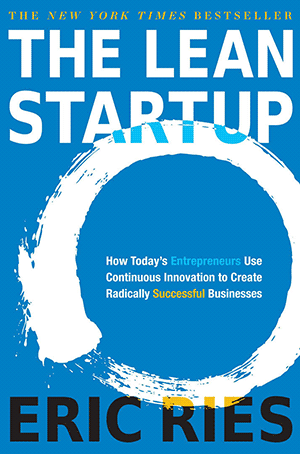 I read this book just before I started Wooassist, and recently decided to go through it again. It was just as thought provoking second time around.
I read this book just before I started Wooassist, and recently decided to go through it again. It was just as thought provoking second time around.
Here is a summary of the principles I have taken away from the book Lean Startup by Eric Ries.
Who is Eric Ries?
Eric Ries is an entrepreneur and co-founder of IMVU, a social network, which grew to $50 million in annual revenues in 2011 employing over a hundred people in Mountainview California. IMVU’s virtual goods catalogue now has more than 6 million items in it, with 7,000 added every day and most of the items are created by its customers.
What are the principles from the Lean Startup Method?
 Stand up from failure. The author experienced difficult failures too. The first company where he worked as a software engineer failed. However that did not stop him because he partnered with one of the founders to form IMVU later.
Stand up from failure. The author experienced difficult failures too. The first company where he worked as a software engineer failed. However that did not stop him because he partnered with one of the founders to form IMVU later.- Recognize the reality that most start ups fail. Eric Ries has worked with hundreds of entrepreneurs and has seen many promising startups lead to failure. “The grim reality is that most startups fail. Most
new products are not successful. Most new ventures do not live up to their potential.” - Do not be afraid to make mistakes. Instead, be determined to make mistakes! Eric Ries and his cofounders are determined to make new mistakes. They make a point to do everything wrong: instead of spending years perfecting their technology they instead build a minimum viable product, an early product that is terrible, full of bugs and crash-your-computer stability problems. Then they ship it to customers way before it is ready. And they charge money for it. After securing initial customers, they change the product constantly and ship new versions of our product frequently.
- Take action: produce your minimum viable product. Even when your product is not yet perfect, start marketing it, start sending it out to customers. Get feedback to it. Charge money for it. Then improve it quickly.
- Eric Ries and his team listen to the customers but do not always follow what their customer says they want, instead they make experiments on their customers! Eric Ries said: “We really did have customers in those early days—true visionary early adopters—and we often talked to them and asked for their feedback. But we emphatically did not do what they said. We viewed their input as only one source of information about our product and overall vision. In fact, we were much more likely to run experiments on our customers than we were to cater to their whims.”
- The Lean Startup Method – is built on many existing management and product development ideas, including lean manufacturing, design thinking, customer development, and agile development. It is a method for creating continuous innovation in any organization.
- The Lean Startup Method puts a focus on what customers want (without asking them), and a scientific approach to making decisions.
- Experimentation is important: Eric Ries considers himself fortunate to have cofounders who were willing to experiment. One thing in common between the cofounders was that they were fed up with the failure of traditional thinking.
- Customer Development = Business + Marketing Functions Are As Important As Engineering And Product Development. Steve Blank who is an investor and adviser for IMVU. In 2004, Steve began to preach a new idea: the business and marketing functions of a startup should be considered as important as engineering and product development. Business and marketing deserves a rigorous methodology to guide them. He called that methodology Customer Development, and Eric Ries was greatly influenced by this.
- Eric Ries studied Toyota’s Lean Manufacturing System and used some of the ideas:
Lean manufacturing originated in Japan with the Toyota Production System. This heavily influenced the Lean Startup Method. - The Five Concepts:
Entrepreneurs are everywhere – the strategies can work for small and large companies.
Entrepreneurship is management – you need a management that can handle extreme uncertainties.
Validated learning – part of the job of entrepreneurs is learning how to build a sustainable business. You need to run frequent scientific experiments that will test each element of the entrepreneur’s vision.
Build-measure-learn – turn ideas into products, measure how customers respond, and decide whether to change direction or stay in the same direction. Your business needs a feedback loop.
Innovation accounting – focus on the boring stuff, how to measure progress, how to set up milestones, how to prioritize work. - Vision, Steer, Accelerate
a. It’s also important to build a minimum viable product rather than aiming for perfection right at the start.
b. It’s important to have leap-of-faith ideas—we don’t know if they will work or not, that’s why we will test these ideas rigorously. Don’t discount any idea because it doesn’t “seem” plausible, try these ideas out and then measure the results.
“Vision” – The entrepreneur has a vision, a leap of faith idea, but it’s important to gauge if they are making progress, and this is where we need validated learning. To achieve this validated learning, use scientific experimentation. The lessons you learn will help you build a sustainable business.
“Steer” – the process is first Build, second is Measure and third is to Learn. Build-measure-learn is a feedback loop and again is part of the validated learning. The entrepreneur begins with leap-of faith assumptions then build the minimum viable product, then the progress is measured through rigorous testing, and we measure whether or not the assumptions of the entrepreneur are valid or not. There is a need to establish a new accounting system for evaluating whether entrepreneurs are making progress, and a method for deciding whether to pivot (changing course) or persevere in the same direction.
Accelerate” – explores techniques for entrepreneurs to speed through the Build-Measure-Learn feedback loop as quickly as possible even as they scale. This focuses on lean manufacturing concepts such as producing small batches of your products rather than big batches, getting feedback to your product fast, and organizational design to improve product growth. Toyota uses principles such as drawing on the knowledge and creativity of individual workers, shrinking of batch sizes, just-in-time production and inventory control, and an acceleration of cycle time
Take Action
These twelve principles can help you grow your business faster than before.
Here are some actions you can immediately take:
- Produce your minimum product. Don’t wait for your product to be perfect—get it out and into the hands of your customers.
- Improve your product quickly. Once you have customers testing your products, you can immediately improve them.
- Listen to your customers (but not what they say). Observe your customers and observe their actions, but it’s not necessary to follow what they say.
- Be willing to experiment.
- Build the product, measure the progress, learn from the progress. This is the process of getting validated learning.
- Spend time for the boring stuff—measuring progress, establishing milestones, tracking.
- Do the same thing not only for your product development, but also for your marketing and business functions. Build, measure, and learn.
- Based on your learning, decide whether to change course (pivot) or to accelerate on the same path.








Leave a Reply